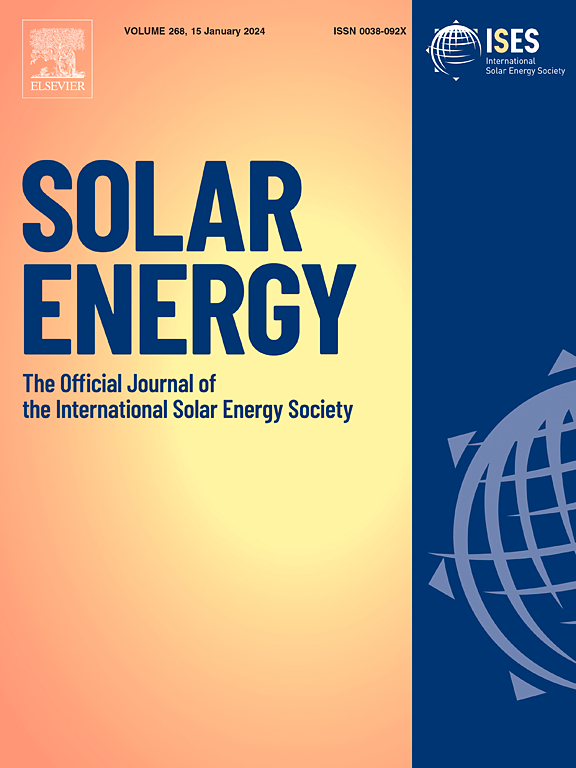A review on tandem solar cells based on Perovskite/Si: 2-T versus 4-T configurations
IF 6
2区 工程技术
Q2 ENERGY & FUELS
引用次数: 0
Abstract
Perovskite- based solar cells (PVSK-SCs) are a prospective photovoltaic (PV) technology that has the potential to provide a higher power conversion efficiency (PCE) at less expense than the current market standard. The Shockley-Quiesser (S-Q) limit restricts the PCE of single junction cells. Thanks to their ability to surmount this limit through innovative design, tandem solar cells (TSCs) are broadly regarded as the industry’s next evolution in PVs. In order to absorb light across a broader spectrum of wavelengths, these architectures combine multiple types of light absorbers with considerably varying band gaps that complement each other’s absorption characteristics. The development of halide perovskite (PVSK) absorber material has made it feasible to create TSCs that are more efficient. Perovskites have been applied as a companion in diverse types of TSCs, involving those based on Si and other thin film cells, including CIGS and other perovskite candidates. This review outlines the primary scientific and main engineering issues related to TSC based on PVSK as top sub-cells. The characteristics of TSC technology are discussed, including the potential configurations and device topologies. The advancements in PVSK/Si tandem technologies are reviewed with a specific focus on the mechanically stacked four-terminal (4-T) and the monolithic two-terminal (2-T) multi-junction designs. Lastly, the limitations and challenges that are still limiting the efficiency and commercialization of these PVSK/Si TSC devices are highlighted, along with a roadmap of strategies and future research directions to further increase their PCE.
基于钙钛矿/Si: 2-T与4-T结构的串联太阳能电池综述
钙钛矿基太阳能电池(PVSK-SCs)是一种有前景的光伏(PV)技术,它有可能以比目前市场标准更低的成本提供更高的功率转换效率(PCE)。Shockley-Quiesser (S-Q)极限限制了单结电池的PCE。由于能够通过创新设计突破这一限制,串联太阳能电池(tsc)被广泛认为是光伏行业的下一个发展方向。为了在更宽的波长范围内吸收光,这些结构结合了多种类型的光吸收器,具有相当不同的带隙,相互补充吸收特性。卤化物钙钛矿(PVSK)吸收材料的发展使得制造效率更高的tsc成为可能。钙钛矿已被应用于各种类型的tsc中,包括基于Si和其他薄膜电池的tsc,包括CIGS和其他钙钛矿候选者。本文综述了以PVSK为顶级亚细胞的TSC的主要科学问题和主要工程问题。讨论了TSC技术的特点,包括潜在的配置和器件拓扑。综述了PVSK/Si串联技术的进展,重点介绍了机械堆叠四端(4-T)和单片双端(2-T)多结设计。最后,强调了仍然限制这些PVSK/Si TSC器件效率和商业化的局限性和挑战,以及进一步提高其PCE的战略路线图和未来的研究方向。
本文章由计算机程序翻译,如有差异,请以英文原文为准。
求助全文
约1分钟内获得全文
求助全文
来源期刊

Solar Energy
工程技术-能源与燃料
CiteScore
13.90
自引率
9.00%
发文量
0
审稿时长
47 days
期刊介绍:
Solar Energy welcomes manuscripts presenting information not previously published in journals on any aspect of solar energy research, development, application, measurement or policy. The term "solar energy" in this context includes the indirect uses such as wind energy and biomass
 求助内容:
求助内容: 应助结果提醒方式:
应助结果提醒方式:


